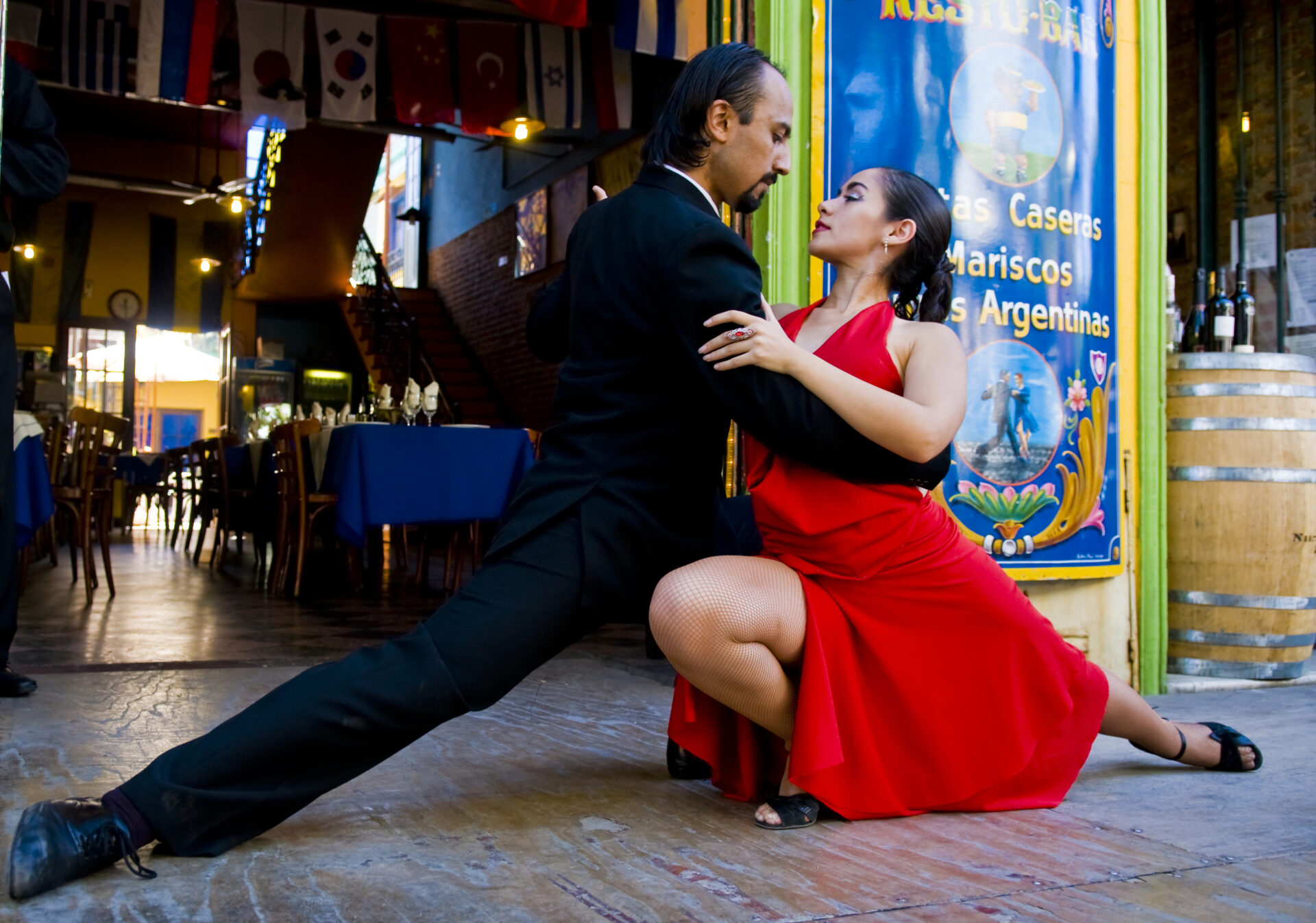According to researchers, Tango is more than just a dance; it’s a powerful therapy for anxiety, depression and can even lower symptoms of Parkinson’s disease. The conclusions of the study were published in the Psychology & Behavioral Science International Journal and prove that different modalities of integrative therapies, such as dance, can contribute not only to physical improvements but can also have a profound positive effect on the nervous system and mental health. The study on the “Benefits of Argentine Tango in Diseases and Disorders” was performed at the University of Caen, in Normandy, France.
Even though Therapeutic Dance (TD) has been recognized as a psychotherapeutic use of movement to explore and express emotions individually or in a group setting with proven positive results for sufferers of depression, breast cancer recovery, and other emotional issues, tango has caught the attention of researchers around anxiety.
One of the primary advantages of tango is its ability to foster social connections and improve interpersonal skills. Through partner dancing and constant communication, participants experience a sense of belonging and create deep connections with their dance partners. This social interaction stimulates positive emotions, ultimately combating the feelings of isolation often associated with depression and anxiety.
The dance involves elegant movements, precise footwork, and graceful body coordination. According to Harvard Medical School, scientists are now focusing more on the complex mental coordination that dance requires. Neuroscientists point out that music stimulates the brain’s reward centers, while dance activates the body’s sensory and motor circuits. These regions include the motor cortex, somatosensory cortex, basil ganglia, and cerebellum. Eye-to-eye engagement, trust in the other partner, and closeness of contact all contribute to stability, balance, and social interaction. Regular practice of tango promotes physical exercise, helping to release endorphins and improve overall fitness. This physiological effect contributes to a sense of well-being and mental rejuvenation, effectively alleviating depressive symptoms and anxiety.
Moreover, the rhythmic patterns and music in tango lend themselves to mindfulness and relaxation. Engaging in tango allows individuals to focus their attention on the present moment, fostering a sense of mindfulness and diverting anxiety-inducing thoughts. The simple pleasure of moving to the rhythm can create a meditative state of mind, promoting a sense of calmness and tranquility. According to scientists, mindfulness not only brings a sense of calmness, influencing less production of cortisol, but also stimulates neuroplasticity and neurogenesis, that is, resilience plus learning ability and the production of neurons, respectively.
Researchers also concluded that tango could have a positive effect on people who suffer from Parkinson’s disease. Benefits for endurance, shoulder movement, body mechanics in general, and lower stress levels might be enough of an indication that the wellness of a nation can have a global influence. Hopefully, it will inspire more than one nation to tango on using dance as an integrative tool with medication.
From the deep connections fostered with partners to the mindful rhythm that guides each step, tango can take us to a world where anxiety takes a backseat. So, if life’s anxieties ever seem overwhelming, perhaps it’s time to let the tango guide your steps and soul towards serenity. Ready for a dance?
#Movement, #parkinson’s disease, #anxiety, #depression, #dance, #tango, #tranquility, #calmness, #mindfulness, #relaxation, #endorphins, #mentalhealth, #mentalrejuvenation, #integrativemedicine, #holistictherapy, #Argentinetango
For the full video, click on the link below :https://youtu.be/pIKJ2pf7wRs?si=hvvAPic_MUaBo98q

Source: https://juniperpublishers.com/pbsij/PBSIJ.MS.ID.555807.php

